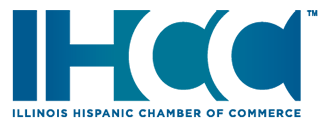This new package provides additional funding for those businesses that did not receive PPP money in the first round, especially minority- and women-owned businesses.
In addition, it allows businesses a second chance at PPP money if they can show significant losses in 2020 over their 2019 revenue. The exact percentages are yet to be determined.
The bill also addressed what was probably the biggest outstanding issue with PPP: the deductibility of expenses paid for with the forgivable loan. The Trump Administration position to date, largely led by Treasury Secretary Steven Mnuchin, was that businesses could not deduct the expenses paid for with PPP funds as they ordinarily would because the loan is forgivable and not taxable income.
The Administration’s view was taking the tax deductions would be “double dipping” on top of the grant. The business community was up in arms about this adverse tax consequence, which is now corrected.
How small businesses will benefit from new relief package
In addition to the tax fix, the new bill provides the following aid to small businesses:
- Funds for businesses that received the first round of PPP funds but can qualify for another bite at the apple if they can show significant losses in 2020 over 2019
- Funds earmarked for non-profits and news outlets that weren’t eligible in the first round
- $15 billion for live venues, independent movie theaters, and cultural institutions
- $20 billion for targeted grants through the Economic Injury Disaster Loan program through the Small Business Administration (SBA)
- Tax deductions for business meal expenses
- Funds earmarked for “very small” businesses and lending through community-based lenders like Community Development Financial Institutions (DDFIs) and Minority Depository Institutions (MDIs). This includes $9 billion in U.S. Treasury capital investments in CDFIs and MDIs and $3 billion for the CDFI fund to support low income and underserved communities.
PPP loan forgiveness
The PPP program closed on August 8, 2020, after approximately 5.2 million businesses applied for and received the loans.
If businesses use the funds according to the regulations, which include spending at least 60% on payroll to keep people employed and the additional funds on rent, utilities, mortgage payments, and interest on existing debt, they can apply for forgiveness and have the loan convert into a grant that does not need to be repaid.
Notably, due to confusion and concern around the program, approximately $130 billion dollars in funds were left unused at the August closing.
We are watching the situation closely. To stay prepared, the IHCC are inviting businesses to register now to receive PPP updates. CLICK HERE.

